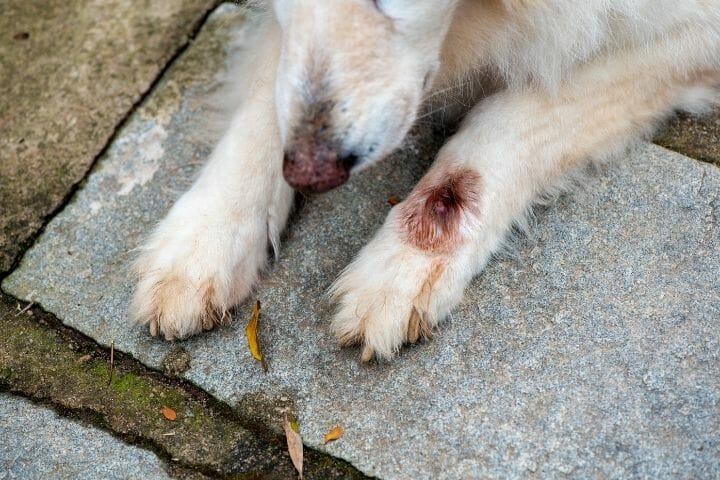Treating Ringworm Can be a Big Commitment
The home hygiene practices my veterinarian recommended were extensive.
*If you use a septic tank, this much bleach could damage the bacteria in your septic system. You may want to check out alternative routes of disinfection.
To save my good sheets, I purchased some from the local thrift store. The schedule of changing and bleaching sheets and dog bedding as well as bathing the dog was grueling, but getting rid of the fungal spores was crucial. If your dog sleeps with you, you should also change and bleach the sheets on your bed and your pajamas every day.
Topical antifungals (e.g., Tinactin, Lamisil, Zeasorb) can be started at the first signs of ringworm. Other home measures include home hygiene (described above), and shampooing with an antifungal shampoo. When I noticed a gray, scaly patch on Athena’s shoulder, I called my veterinarian right away. She told me to put a topical antifungal, Tinactin, on it. While many cases of ringworm will clear up with this treatment, we were not so lucky.
Next, our veterinarian prescribed oral antifungal medicine. First, she prescribed ketoconazole, at a low dose, but that didn’t clear up the ringworm. She increased the dose, but that just made Athena sick. Then, she prescribed itraconazole, but that medicine was expensive and didn’t help, either. This was a very resilient ringworm!
In severe outbreaks, like Athena’s was becoming, secondary bacterial infections are a concern. These lesions looked scabby and red–think of a fresh scab from a skinned knee. This is in contrast to the gray or pink scales of the fungal infection. The red, bloody looking scabs, which were the size of a pencil eraser on Athena, were on her neck and surrounding areas.
If your dog experiences hair loss will likely grow back; however, it can take several weeks or months. If the infection is not treated right away or is tenacious, like Athena’s was, the hair loss could be permanent.
What Is Athlete’s Foot?
An athlete’s foot is a fungal skin infection that occurs first on a dog’s feet and later spreads all over the body. Most of the Athlete’s foot cases in dogs are caused by various fungi which belong to the group dermatophytes. The most common one is ringworm.
The fungus stays in a warm moist environment like nails, skin, and hair and eats Keratin. But sometimes, athlete foot can be caused by non-dermatophytes like yeast.
Athlete’s foot is not a life-threatening disease, but your dog will lose its fur and it will itch frequently when he has an athlete’s foot.
Most people think of ringworm as parasites like hookworm or roundworms. But no, it is a fungal skin infection that can affect not only human beings but other domesticated animals, including your dog.
You will often find a ring-like structure on the infected area of your canine. So, its name is given ringworm. It is also known as Athlete’s foot when the ring-like structure appears on the feet of your dog or the groin area.
Almost 70 % of ringworm cases found in dogs are mainly caused by Microsporum fungus. The remaining percentage of ringworm cases are caused either by Microsporum Gypseum or Trichophyton Mentagrophytes fungus.

Your dog can have ringworm when he directly contacts the fungi. It can happen when your furry friend comes in contact with any dog or person infected with ringworm. Sometimes your doggo can come in contact with any contaminated object like his food or water bowl, beddings, carpet, and have ringworm.
Ringworm is not a serious disease, but your dog will soon lose his fur or develop severe itching. Remember, ringworm is contagious. So, you can be infected by your dog.
So, it’s better to take your dog to the vet so that he will start treating your dog as soon as possible. The doctor may perform a fungal culture of your dog’s skin or take a hair sample and do a microscopic examination to diagnose ringworm.
Is antifungal cream safe for dogs?
Use of a topical antifungal cream, such as miconazole cream, is safe in small portions when applying it to a single skin lesion. However, never use a topical medication without consulting your local veterinarian first. Antifungal creams are not considered effective because fungal infections typically affect multiple areas of a pet’s body. The bottom line is antifungal creams are considered inefficient nowadays.
FAQ
Can I use athlete’s foot cream on my dog?
Can I use human antifungal spray on my dog?
Can I use tinactin on my dogs ringworm?
Can you use anti-fungal cream on dogs?